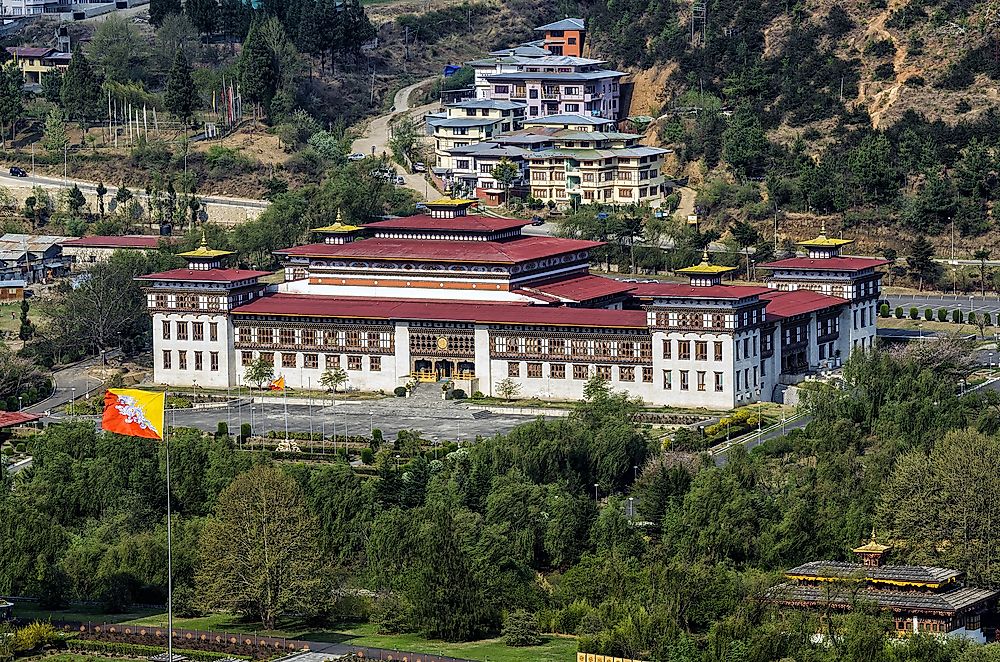What Is The Capital Of Bhutan?

A small, landlocked nation nestled in the heart of the Eastern Himalayas in South Asia, Bhutan is bordered by India and the Tibet Autonomous Region. It is South Asia’s second smallest nation and has a distinct national identity of its own based on Buddhist principles. The country has been independent for centuries and has never been colonized. A 2016 estimate puts the country’s population at 797,765. The country covers a total area of 38,394 square km.
What Is The Capital Of Bhutan And Where Is It Located?
The only settlement with a city status in Bhutan, Thimpu is also the capital of the Kingdom of Bhutan. The city is based on the western bank of the Raidāk River valley in west-central Bhutan. The elevation of Thimpu ranges between 2,248 meters and 2,648 meters, making it the world’s third highest capital city. Unlike most national capital cities of the world, the international airport of Bhutan is not located in Thimpu but in Paro about 54 km away.
History Of The Capital City Of Bhutan
Prior to 1960, the area that is now the thriving capital of Bhutan, Thimpu, was occupied by several small hamlets. The area was witness to one of the most decisive battles in the history of the country in 1885 which led to the establishment of the rule of the Wangchu Dynasty with Ugyen Wangchuck becoming the first King of Bhutan. Under the dynasty, the Kingdom thrived and the progressive decisions taken by the rulers were welcomed by Bhutan’s people. Although Punakha was the former capital of Bhutan, in 1952, a decision was taken by the king to shift the capital to Thimpu. The city was formally recognized as the country’s capital in 1961. In 1971, after Bhutan became a member of the United Nations, Thimpu has rapidly developed due to the presence of international funding organizations and diplomatic missions in the country. The city hosts a population of 104,000 (2015) and occupies a total area of 26 square km.
Present-Day Role Of The Capital Of Bhutan
Being the seat of the Bhutanese government, Thimpu hosts the important political buildings of the country like the National Assembly building (Thimpu is a recently formed parliamentary democracy) and the formal residence of the nation’s King, the Dechencholing Palace. The economy of the city is based on agriculture and livestock grazing. The city contributes to 45% of the nation’s GNP. Tourism is also a thriving industry in Thimpu but the people and government here ensure sustainable tourism that does not disturb the fragile ecological balance of the area. Thimpu also reflects the culture of the country. The locals here adhere to their religion, tradition, customs, and costumes. Lively and colorful festivals like the Cham dances are celebrated in the city.











